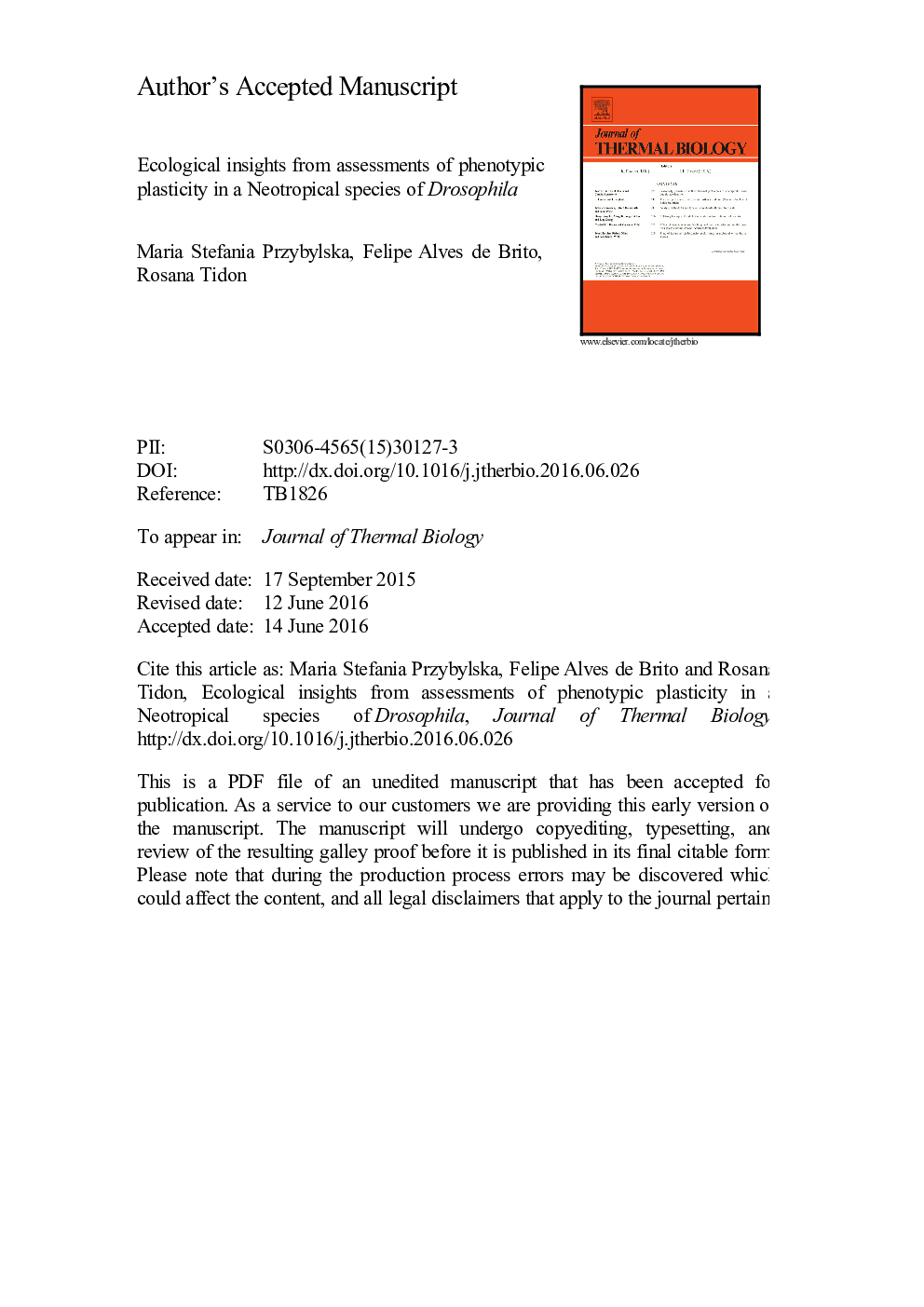| Article ID | Journal | Published Year | Pages | File Type |
|---|---|---|---|---|
| 5593490 | Journal of Thermal Biology | 2016 | 40 Pages |
Abstract
Several authors have called attention to the evolutionary importance of phenotypic plasticity and niche construction, because such phenomena require a new status and a new perspective. Drosophila species are traditionally used as models in investigations of phenotypic plasticity, although the majority of such research has been conducted with species of the subgenus Sophophora, primarily Drosophila melanogaster. In this study, we investigated the phenotypic plasticity of Drosophila cardini, a Neotropical species of the subgenus Drosophila, and focused on the wing size, wing shape, thorax length and wing: thorax ratio of lines that were collected in the Brazilian savanna and exposed to different temperatures during growth. All of the analyzed traits presented plasticity to temperature, and the reaction norms were similar to those previously found in other drosophilid species; in addition, the maximum values were consistent with the temperature variations at the collection sites. The specimens that emerged at low temperatures were larger and had more rounded wings compared with those that emerged at high temperatures, which were smaller and had narrower wings. We hypothesized that the differences observed in the shape of the wings might be associated with flight performance. Nevertheless, further investigation of the relationships among wing shape, wing loading and flight performance is required. Investigations on phenotypic plasticity using species with diverse ecologies should help us to better understand how this phenomenon operates in nature, and studies of this type must be encouraged.
Related Topics
Life Sciences
Agricultural and Biological Sciences
Agricultural and Biological Sciences (General)
Authors
Maria Stefania Przybylska, Felipe Alves de Brito, Rosana Tidon,
